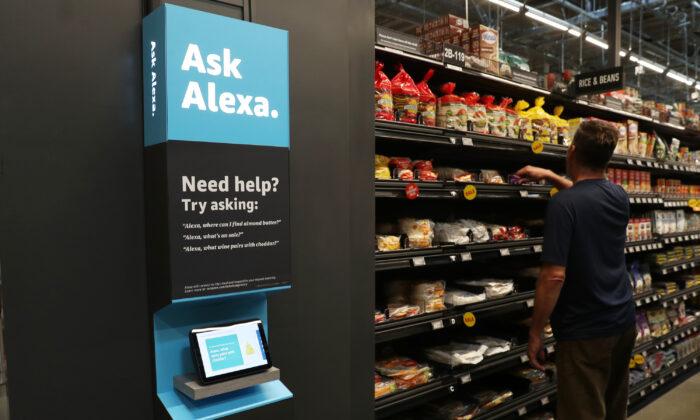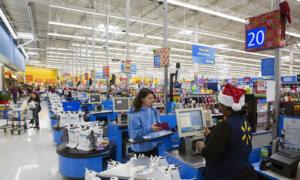Retail stores reeling from losing billions from theft last year are making some tough decisions that may impact consumer-shopping experiences, including a big swing in their dependence on self-checkout.
According to the National Retail Federation (NRF), retail theft reached $121.6 billion in 2023, and is expected to reach $150 billion by 2026. This could be one reason stores owned by Walmart, Target, and Dollar General have announced their reliance on self-checkout will shift dramatically for the rest of 2024. But few are willing to bring it up in their announcements.
“We’ve found that 25 percent of their losses are happening through self-checkouts, and they’re now looking at how to effectively address those issues,” Adrian Beck, an emeritus professor with the School of Criminology at the University of Leicester, United Kingdom, told The Epoch Times. “Around 53 percent of the loss was malicious and purposeful, but there was also a huge chunk of non-malicious theft where people just make mistakes.”
Professor Beck’s report, “Global Study on Self-Checkout,” found that theft was a problem with the technology as early as 2022.
Many retailers, including grocery stores, added self-checkout options during the pandemic to lessen the personal touch and kept them in place because it allowed them to cut back on the cost of hiring human cashiers. But select retailers are now reviewing and, in some cases, reversing that decision.
Target became the first to announce changes last month when it determined that self-checkout stations would be limited to 10 items or less. The company began testing the change last fall and announced they were permanently rolling out the changes across the country last month, affecting more than 2,000 stores.
Walmart is taking a more methodical approach. In March, the company announced that it was eliminating self-checkout altogether, but in just two stores currently: one in St. Louis, Missouri, and the other in Cleveland, Ohio. The company will be hiring more cashiers to make up the difference. Last year, Walmart removed self-checkout in three stores in Albuquerque, New Mexico.
Walmart spokesman Brian K. Little told Supermarket News that the decision was made after assessing shopping patterns. “We believe the changes will improve the in-store shopping experience and give our associates the chance to provide more personalized and efficient service,” he said.
Despite billions of dollars of retail theft last year, few retailers announcing changes to self-checkout are pointing to that as one of the reasons. “I think, in all honesty, their reasoning is a little murky,” said Neil Saunders, managing director of retail at GlobalData. “A lot of customers have issues with self-checkout and many have been cut back because so many people just don’t like them. But in regards to theft, they aren’t willing to talk about it,” he said to The Epoch Times. According to the NRF, only 2 percent of those stealing items from stores are caught.
Target’s announcement also focused solely on the customer experience, saying, “By having the option to pick self-checkout for a quick trip, or a traditional, staffed lane when their cart is full, guests who were surveyed told us the overall checkout experience was better, too.”
Meanwhile, Dollar General has been more open about its theft dilemma. Last month, it announced that the company would eliminate self-checkout in 300 stores with the highest shoplifting and merchandise losses. In its remaining 9,000 stores, the company will convert some or all of its self-checkout registers to regular checkout staffed with cashiers.
Despite the multitude of announcements by major retailers to eliminate or restrict the use of self-checkout machines, Mr. Saunders says they’re not going away entirely. “It’s a restructuring, not a total phasing out. The nature of its use has changed, but it’s not an elimination. Target is changing its parameters from going from a free-for-all to 10 items or fewer. They have new technology that uses Ai for visual recording, alerting customers when things haven’t been scanned. That technology is here to stay,” he said.
Last month, Amazon announced it was abandoning its cashier-less checkout, known as “Just Walk Out” technology, from its grocery store locations in the United States, where shoppers could scan items and pay through a credit card without standing in a check-out line. Professor Beck says that technology was ahead of its time.
“The error rate was considerably higher with that, and was ridden with the potential for mistakes. Those Amazon stores were relatively challenging as they were very expensive to set up and probably too far ahead of the curve in how consumers were able to react to the technology. Customers just didn’t take to them,” he said.






